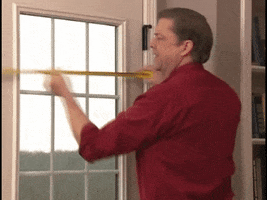vetteguy53081
Well known Member and monster tank lover
View Badges
Partner Member 2024
Excellence Award
Reef Tank 365
RGB
Article Contributor
Tampa Bay Reef Keepers
West Palm Beach Reefer
Hospitality Award
Ocala Reef Club Member
305 Reef Club
Wisco Reefers
Midwest Reefer
Fish Medic
MAC of SW Florida
Rock Pool Reef Keepers
R2R Secret Santa 2023
My Tank Thread
My Aquarium Showcase
Occasionally we see mention of PAR and question "is my light sufficient for my tank and/or coral" ?
There as we know are many choices and options for lighting. We have seen many pics of tanks with basic lights as well as high end lights which are great looking tanks. PAR is Photosynthetic Active Radiation output of lighting and the ability of lighting to maintain or increase growth in coral without having too much which promotes algae in the tank. Lighting transforms coral energy into food/sugars giving them their color and more.
But years ago, we used compact fluorescent, incandescent bulbs, Halide and then the evolution of basic LED lights and corals did just well. Many of us have LPS, NPS and soft coral which have less light demands opposed to SPS, clams and some montis. PAR is most important with aquacultured coral in many cases as you want to match the coral's lighting spec with that of the wild as close as possible. The nice thing about corals is that many are adaptable to change in lighting.
Light balance plays a huge role and I believe a reason many of us have gotten away with not checking or comparing PAR. Some range areas are :
- Soft Corals (zoanthids, palythoa, mushrooms and leathers): 50-150 PAR range
- LPS Corals: 50-200 PAR range
- Hard Corals (stony corals, small polyp stony, clams): 200-500 PAR range
I believe corals require observation and small adjustments based on their individual needs and how they react to light. when a coral starts to lose color, reducing the light intensity often corrects issues.
So, the question is. . . . . Do we really need a PAR meter or can we observe our coral over time, and learn how to recognize their needs through observation?
PAR meters do help us understand the ranges of light in our reef tanks but ive gone,, , , many of us have gone without a meter all this time and maintained coral quite well.
Do you own a PAR meter and what advantages have you seen with its use?
Do you have access to a PAR meter whether it be LFS rental, local club or friend?
If you use one- what are your PAR ranges for LPS - softies- SPS- NPS ?
There as we know are many choices and options for lighting. We have seen many pics of tanks with basic lights as well as high end lights which are great looking tanks. PAR is Photosynthetic Active Radiation output of lighting and the ability of lighting to maintain or increase growth in coral without having too much which promotes algae in the tank. Lighting transforms coral energy into food/sugars giving them their color and more.
But years ago, we used compact fluorescent, incandescent bulbs, Halide and then the evolution of basic LED lights and corals did just well. Many of us have LPS, NPS and soft coral which have less light demands opposed to SPS, clams and some montis. PAR is most important with aquacultured coral in many cases as you want to match the coral's lighting spec with that of the wild as close as possible. The nice thing about corals is that many are adaptable to change in lighting.
Light balance plays a huge role and I believe a reason many of us have gotten away with not checking or comparing PAR. Some range areas are :
- Soft Corals (zoanthids, palythoa, mushrooms and leathers): 50-150 PAR range
- LPS Corals: 50-200 PAR range
- Hard Corals (stony corals, small polyp stony, clams): 200-500 PAR range
I believe corals require observation and small adjustments based on their individual needs and how they react to light. when a coral starts to lose color, reducing the light intensity often corrects issues.
So, the question is. . . . . Do we really need a PAR meter or can we observe our coral over time, and learn how to recognize their needs through observation?
PAR meters do help us understand the ranges of light in our reef tanks but ive gone,, , , many of us have gone without a meter all this time and maintained coral quite well.
Do you own a PAR meter and what advantages have you seen with its use?
Do you have access to a PAR meter whether it be LFS rental, local club or friend?
If you use one- what are your PAR ranges for LPS - softies- SPS- NPS ?












